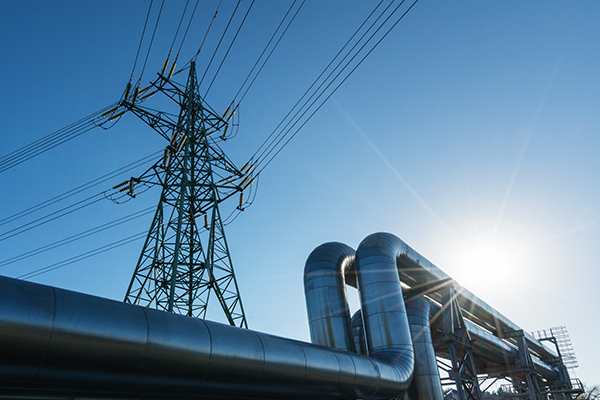
The Big Switch
April 16, 2024 | By Curtis Bennett
Modern controls can optimize hybrid gas/electric hydronic heating solutions.

(Getty Images)
Well, it’s a good thing I’m a huge procrastinator otherwise I wouldn’t have an electrifying story for you today. So, yes, regular readers of my articles, I shocked myself again.
While downstairs working on a project for SAIT in Calgary I needed to test a control that has 120VAC. Easy enough you might think, but all I had around was a circuit board. Well, I found the power cord with the proper connector on it and plugged it onto the board.
The stupid part was that I had plugged the cord into the wall first. Normally this is not an issue, and I am careful, but as I was plugging the connector onto the board I touched the fuse. As you can imagine I yelped a bit.
It was not a huge shock, but enough to let me know how dumb and careless I can be sometimes when I am rushing. I went upstairs and asked my daughter, “Did you guys hear me yelp?”
Both my daughter and wife shrugged and went on about their evening. I don’t get much sympathy for being dumb in my house.
The focus of today’s article, like some others I write, can be a touchy subject in some areas of the country. I realize not everyone may agree with my point of view, and I’m ok with that. Our subject today involves bringing together new and shiny heat pumps with the now passé gas-fired boilers.
I say this with tongue in cheek, of course, although this topic is dividing not only our industry but also our nation. Now I won’t get into the politics, but we will see how these seemingly opposite sources of energy can be united and work together.
Decarbonization and electrification are the buzz words, and electrification of heating products in HVAC is accelerating to a crazy point. It does seem like all companies are trying to build heat pumps for the hydronics industry, whether these are water-to-water or air-to-water. And it seems like a new company is popping up every week.
Don’t get me wrong, I am all about saving the environment, but I am not about electrification at all cost. Like most things in life, we need a little balance here and the Big Switch can help.
The Big Switch is an idea of using the lowest cost energy resource available at a specific point in time.
Let’s start with a few statistics to realize the potential here:
- Space heating and/or cooling accounts for the most energy used in a building.
- DHW alone accounts for about 25% of the energy used in many buildings.
- Colder climates use more natural gas than hotter climates.
- Hotter climates use more electricity than colder climates.
- In Canada the average household uses about 10GJ of gas and about 830kWh of electricity per month.
- Return on investment (ROI) is important.
Controls in our industry are becoming more savvy and cost effective. By this I mean we can gather more information and not break the bank.
Without this information gathering, our topic today would be a moot point. We need information to make the proper decisions on saving energy and saving money.
In this Big Switch hydronic heating scenario I’m layout out, primarily we would be switching between an electrically operated device, usually an air-to-water heat pump, and a gas-operated device, usually a boiler.
Now you can have an electric element in this equation, but in my next article (look out for The Big Switch PART 2) I’ll do all the calculating and you will see that model does not work out well, but it can.
The first question you are probably asking is, “Why the heck would we even bother with this switching business?”
Good question reader!
I think the number one reason is money, but it’s a tie. Money and a greener planet are tied for first.
I am a huge proponent of ROI. If you put in a system that costs $50k for a hybrid or $20k for gas-fired only, how much gas can you buy for $30K?
I know this is a bit glib, but these are the facts.
And this scales up as well, because the cost of the installation also goes up with more equipment. I’m only pointing it out like this to show the monetary side of the equation.
Now there are financial incentives to install heat pumps, which is a good thing, and there are some other incentives to maximize efficiency of your house as well. So this all needs to be taken into account when making decisions.
Ok, back to reality. How can we cost effectively use both electric and gas heating.
“Be green and save money?” you ask, “not possible.” Well, yes it is.
Now as the installations get bigger, so does the energy usage and potential savings. Especially in the cases of DHW in commercial or large residential buildings. These loads are big, and they are predictable. Perfect for any number cruncher. Or perfect for any number crunching control in our case.
Electricity utilities everywhere are switching to Time-of-Day pricing, if it hasn’t hit your area yet it will.
What this means is when demand is low on the grid the price for electricity is low, and when the demand is high the pricing is high.
Most of the time this would not really work in our favour, but with the onset of energy calculating controls we can calculate the cost of running the gas side compared to running the electric side.
To do this we need utility data, the time-of-day gas pricing (which really does not change much) and time-of-day electricity pricing. We also need to know the Btu output vs input of the boiler and the total COP of the heat pump.
I will get into more specifics in Part 2 of this article, but for now just know we can figure out these values using thermal energy meters (like the ones that we make at HBX Controls) and with a little extra electrical input we can accurately calculate COP’s.
The reason we need to know these in real time is that Btu output and COP’s change. Not so much for the boiler Btu output, but the heat pump COP changes with outdoor temperature.
So, by calculating in real time, or close to real time, we can know which system gives us the best value. By knowing this, and knowing the time-of-day pricing, we are then able to make the best decision possible.
Another factor here when using large DHW loads (as I said above, they are fairly predictable) is that we can pre-charge the tanks.
Why would we want to do this? Well, yes, I know the tanks will lose heat when just sitting there with no usage, but if we pre-charge the tank and actually “over charge” them when the time-of-day pricing is very low over night, there is significant savings that can be made.
In some jurisdictions the time-of-day pricing for overnight periods is 10 times less than peak hours. So, you can see even the small amount of heat loss you may have from pre-charging the tanks is far outweighed by the savings you can realize.
We know that from around 6 a.m. to 8 a.m. is a huge load for DHW in large residential buildings. So, by pre-charging and overcharging the tanks before that happens can save a lot. We can only do this by knowing all the information, COPs, Btu’s and time-of-day pricing.
They are all important. If you are missing one, the equation breaks down.
Ok, that’s a lot to chew on, so I’ll stop there. In the next article we will get into the math, so you can see the potential savings by making the Big Switch. <>

 Curtis Bennett C.E.T is product development manager with
Curtis Bennett C.E.T is product development manager with 


